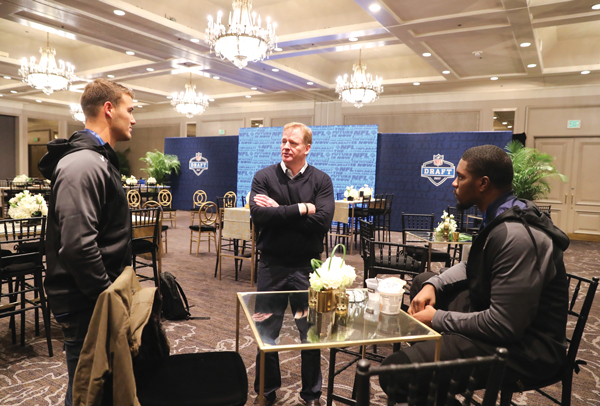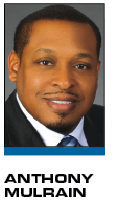Approximately 200 players have now achieved their dream of being drafted by an NFL team, and many are being approached about product and service endorsements, some for the first time. These potentially lucrative opportunities can be exciting for those whose athletic careers are peaking, but they must be appropriately managed to ensure a player maximizes his compensation and protects his image.
While nothing serves as a substitute for experienced legal counsel, athletes (and their representation) can go a long way toward protecting and preserving their interests by considering the following five contractual elements when reviewing and negotiating endorsement agreements.
■ Reverse morals clauses
Companies that ask players to serve as pitchmen customarily require morals clauses, which give them the right to terminate an agreement in the event an athlete engages in conduct that contrasts with community standards of honesty or good morals (think extra-marital affairs, arrests, use of banned substances, etc.).
Similarly, athletes must protect their brands against wrongdoing on the part of the companies they’ve agreed to endorse. Including reverse morals clauses in an endorsement contract empowers an athlete to terminate his agreement with a company in the same manner in which a company may disengage.
Issues that may spur an athlete to use a reverse morals clause could include actions against manufacturers whose goods are shown to have unintended health consequences, or instances of executives engaging in unethical business conduct. In such cases, an athlete may wish to free himself from contractual obligations to market and promote a questionable product, or simply disassociate from the company. Reverse morals clauses give him the ability to do so.
■ Scope of endorsement
Because athletes should be paid more for endorsing multiple products compared with just one, they should always look to narrow the scope of an endorsement. For example, if an athlete intends to endorse only “sneakers,” the endorsement agreement should not say the athlete is endorsing “footwear.” An athlete who has unknowingly signed an endorsement agreement for footwear could find himself obligated to endorse everything one wears on their feet: sneakers, shoes, boots, flip flops, etc. While this might not be problematic for the athlete, additional compensation is warranted for the additional products.
What’s more, the unintended endorsement of footwear would broaden restrictive covenants (representations that the athlete will not endorse for company B that which he has endorsed for company A), thus diminishing the athlete’s ability to enter into agreements with other companies that market similar goods and services.
Simply put, there is an opportunity cost associated with every micro-product or service that an athlete endorses, and athletes should seek to be compensated for all that they do.
 |
Commissioner Roger Goodell met with North Carolina quarterback Mitchell Trubisky (left) and Michigan State lineman Malik McDowell last Wednesday in Philadelphia before the draft.
Photo by: AP IMAGES
|
■ Scope of likeness
Like all of us, an athlete’s time is valuable and he (or she) should be paid for it accordingly. Therefore, the soundest endorsement agreements limit rights to an athlete’s likeness, image and voice, which companies use through a variety of mediums, from magazines and online media to television, radio and point-of-sale displays.
Before signing an endorsement agreement, it is imperative that an athlete understand what the intended usage will be and negotiate an appropriate fee, increasing his compensation for multiple mediums and in instances when required time commitments are greater. For example, it only makes sense to negotiate a higher fee for appearing in a television commercial compared with a “radio drop,” because a commercial is much more time intensive.
To the greatest extent possible, athletes should seek to narrow the amount of time that their likeness, image and/or voice can be exploited.
■ Use of social media channels
An important gauge of an athlete’s popularity is the number of followers they have on platforms like Twitter and Instagram. In fact, a company’s decision to hire an athlete as a pitchman is often closely tied to the number of followers they have, a factor that spurs many athletes to hire professionals to help build their social media presence. Hence, athletes should not simply give away access to their followers. Instead, they should require higher or separate compensation from companies looking to market their goods and services through their social media accounts.
A strong social media presence is a driver for opportunity. Companies recognize and act on this fact, as should athletes.
■ Insuring indemnity obligations when receiving equity for endorsements
Athletes are often presented opportunities to be “the next 50 Cent” with offers of equity (an ownership interest) in a company as part of an endorsement deal. These equity-based deals often make sense as a part of an athlete’s portfolio of endorsements. That said, when an athlete endorses a product, there is always the chance he will be named a defendant in a lawsuit involving false advertising, product liability, breach of contract or breach of warranty.
The conventional way of offering protection in such a scenario is with an indemnity provision that obligates the company to “indemnify, defend and hold harmless” the athlete. This means that if a lawsuit is brought against the athlete, the company is responsible for hiring counsel, paying any judgment and not asking the athlete to contribute to payment of any judgment. This works so long as the company has the economic means to deliver on this obligation.
However, companies that offer athletes equity to be pitchmen often lack the financial wherewithal to indemnify the athlete. Therefore, it is important that an athlete require the company to get insurance to cover their indemnity obligations; produce a certificate of insurance that reflects the existence of the insurance; and name the athlete as an “additional insured” under the policy.
Athletes have tremendous sway when it comes to consumers’ buying habits — a fact that isn’t lost on companies looking to harness their influence. After the hard work, dedication and focus it takes for such athletes to achieve truly elite status, it is important that they are significantly and appropriately compensated, and protected, for every product and service endorsement.
Anthony Mulrain is a sports business attorney at the law firm Mintz Levin. He has represented numerous NFL, NBA and MLB players, including at least one overall No. 1 draft pick in each of those leagues.





